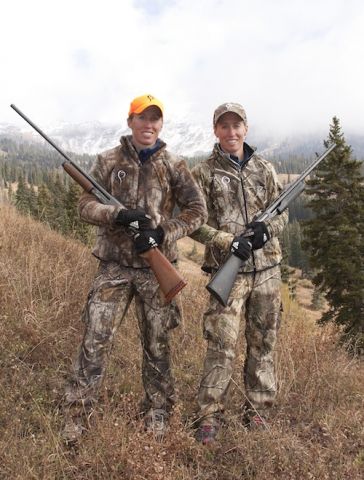Spotting and stalking is our preferred method for hunting elk. We’ve made some ground blinds in the past, but we’ve had the most success spotting and stalking. It takes time and probably more time to harvest an elk with this method than in a blind, but you are guaranteed to have an awesome experience, see some incredible things, and if successful — have a hunt you’ll never forget. Below are some tips for successfully spotting and stalking elk:
1. Watch the wind.
Yes, this one is obvious, but it’s best that when you get to know an area that you take note of any wind patterns. Typically there will be some pattern, but sometimes it’s a crap-shoot and the wind seems to swirl in every direction. We try to plan our stalking in a certain area based off the wind direction.
2. Move SLOWLY!
Trying to see an animal first that has 10 times the vision you have is no small feat. If you’re walking a seven-minute mile pace through the woods, you aren’t going to see anything before it sees you. Slow down, way down, and if you think you’re walking slow, walk slower. We typically hunt in dark timber where the elk have bedded down during the day. They have nothing better to do than lie there and look every direction for something coming their way. Spotting the elk first is just the first slice of the pie.

Albeit a grouse hunt in Colorado, the Barnes’ twins are wearing running shoes! They hardly ever wear hunting boots. And now we know that they slip off their shoes, too! Photo by Jason Baird
3. Take your shoes off. Yes, we repeat … take your shoes off!
Yep, that’s right, those heavy rubber soled hiking boots are noisy in the woods. If you have time, and it doesn’t take too much movement to do so … take your shoes off and sneak in those last remaining yards in your socks. It’s so much quieter and pays off. (Just don’t forget where you left them.)
4. Take your time.
Once you’ve spotted the elk, take your time. I’ve learned that typically they won’t leave or spook, unless you spook them. So, if it takes you an hour to sneak 20 yards, then do it.
5. Don’t get closed minded.
There’s always more eyes than you think. If you see a bull raking a tree and he’s distracted … great! Sneak on in, but remember, there may be another bull, or a cow, and a herd of elk around him. Where’s there’s one there is usually, but not always another. Keep looking all around as you are sneaking in. If there is more than one, sometimes it’s best to stay put and have them work into you.
6. Be patient.
Not every spot-and-stalk is going to work out. You’ve got to have the patience not to rush into the situation, but also know when you need to move, it’ll take some time to figure that out. But the thrill of the success will be worth every failed attempt!
7. Leave the call out of it.
We’ve only ever hunted public OTC land and often times elk get call shy. I can’t even count the number of times I’ve heard someone say that “they wouldn’t come in to my call.” Well, often times when we hear the elk bugling, we don’t answer back, we’ll let them do their thing and sneak in relatively unnoticed. The second you call, the elk know your location, they may be convinced of your call, but that won’t mean they’ll drop everything and come running. By sneaking in during the bugling you can identify which direction their going and try to get in a good position to cut them off. I’ve called loner bulls in before, but it’s hard to get a herd bull to leave his herd.
8. Go unseen.
Your camo and face-mask (or face-paint) is important. We rely on Próis camo to keep us hidden. When hunting elk that usually hang out in the dark timber, your camo must match the terrain. It should be darker and have more green than most patterns. Find a camo that also is quiet when walking.
9. Range it.
As you’re sneaking in, periodically check the distance to the elk with a range finder so you know the yardage when you need to take the shot. There’s no need to sneak in closer than absolutely necessary. If you’re comfortable with a 40-yard shot, than sneak in to 40 yards. Or sneak in as far as you need to get off an effective shot.

Not to be outdone by her sister. Oh, no … here’s Lanny Barnes with her elk! That’s a lot of meat, ladies, for your freezers! Submitted photo
10. Relax.
When you’re that close to a big animal and you’ve just done an awesome sneak to get within range, your adrenaline will be pumping. So take a second to take a deep breath and relax. The next step is the most important, so make sure your steady enough to get a good shot.
Want to learn more about Tracy and Lanny Barnes, twin Olympic biathletes training for the 2014 Olympics? Just check out Twin Biathletes online.
Runnin’ and Gunnin’ with the Twins is sponsored by Advanced Technology International, manufacturer of gunstocks, shotgun accessories and bipods.